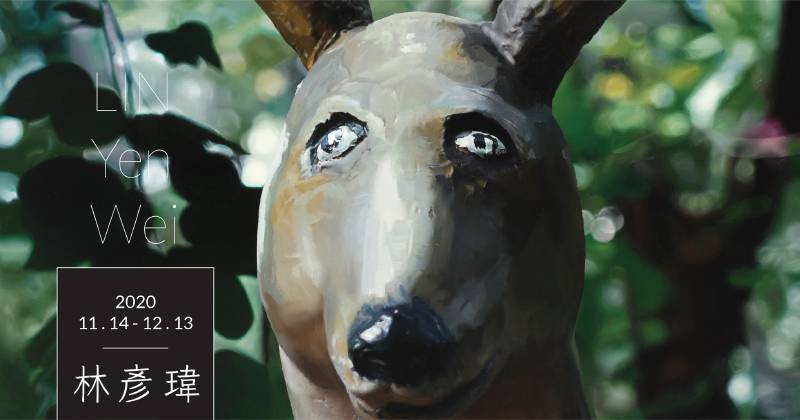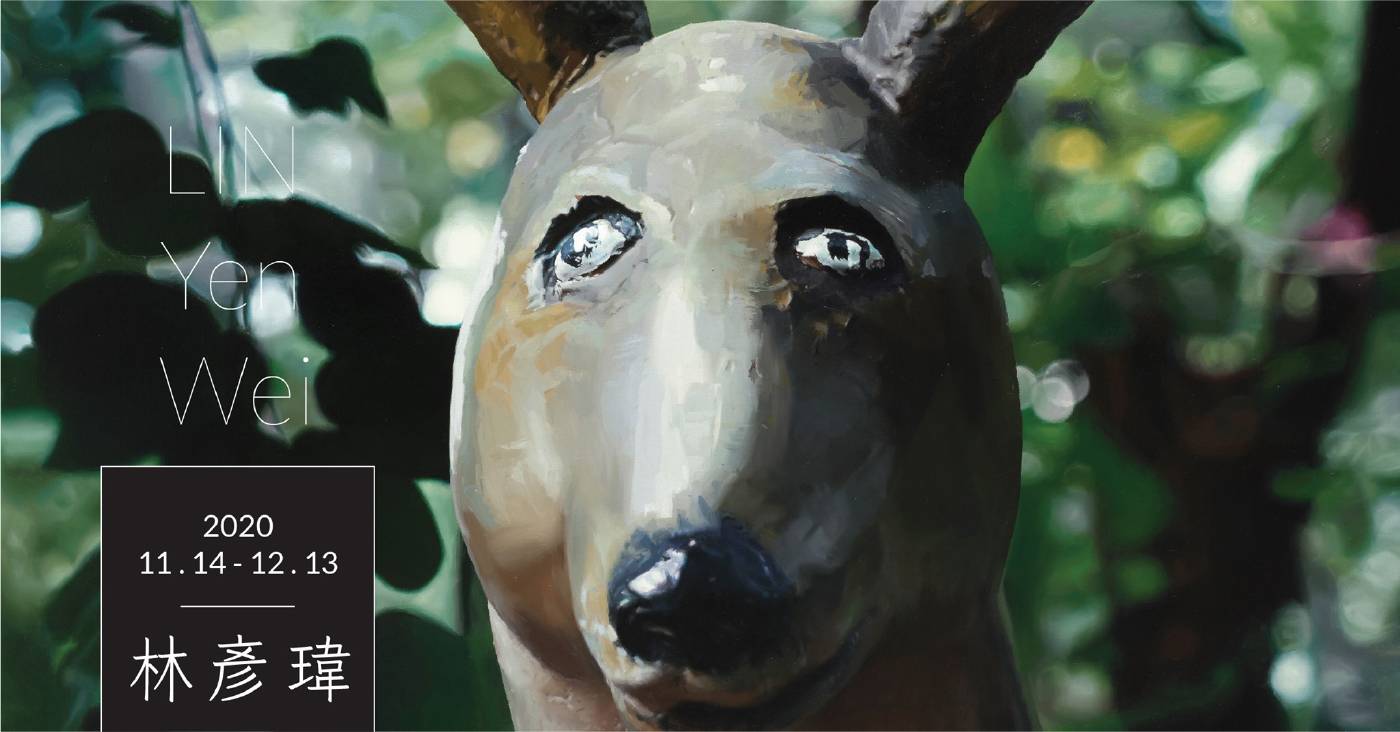誠品畫廊
【林彥瑋個展】

-
展期
日期:2020-11-14 ~ 2020-12-13
-
地點
台北市信義區菸廠路88號
-
參展藝術家
林彥瑋
-
誠品畫廊將於二〇二〇年十一月十四日至十二月十三日舉辦林彥瑋個展,展出藝術家二〇二〇年的新作。林彥瑋的創作多以攝影與繪畫重複、再製生活環境中帶有素人畫家塗裝筆觸的物件,展覽中的「就是喜歡你這樣」和「玩物參照」系列是他以相機將公園中歷經風霜的水泥動物雕像或手邊的塑膠動物玩具捕捉入鏡,再以油彩鉅細靡遺地描繪出這些動物盛滿笑意的大眼、殘敗不堪的外觀或臉中央凸起的模型線,由此提出多元辯證的繪畫形式和揉雜的美學語彙。
在這影像充斥的時代,攝影聯繫著我們日常生活最熾熱的部分,林彥瑋便以「生活中的第二隻眼」來形容相機對於他的重要性。攝影是他創作過程中的第一個步驟,在他從特殊的角度捕捉到的影像中,動物雕塑和玩具的頭像充盈整個畫面,產生強烈的戲劇效果。牠們的眼神無法對焦,咧著嘴的模樣不知是在強顏歡笑還是純粹的愣頭愣腦,然而蒼涼的處境彷彿陽光永遠無法穿透的雲層籠罩著牠們。由此林彥瑋迫使觀眾成為注視者與被注視者,無以回拒那「一切終將被時間拋在後面」的苦澀感。他的第二個步驟是以照相寫實的高超畫技和古老媒材油彩體現水泥雕像和塑膠玩具的觸感、肌理、光澤和硬度,達到伯格(John Berger)心中專屬於油彩繪畫的境界:「雖然畫中的影像是平面的,但潛藏其中的幻覺效果卻比雕刻更為逼真,因為它能讓你感受到畫中物件的顏色、紋理和溫度,感覺它充塞在空間,充塞在整個世界」。林彥瑋的作品既是肖像畫(關於生命)亦是靜物畫(關於死亡),並因為遊走於攝影和繪畫之間的曖昧地帶,這些動物得以穿越形體而成為經驗與外界的調節物。如此林彥瑋要表達的不僅是懷舊與對兒時的回顧、題材的社會文化脈絡,同時試圖深掘出主體的某種精神性,「一種在仿生命體中得到實踐的靈光意識」。
林彥瑋以「就是喜歡你這樣」和「玩物參照」系列觸及藝術史脈絡中罕有人嘗試與解釋的一塊,他所創造出的新詮釋語境和視覺經驗猶如一場場奇遇,而其中最有魔力之處莫過於瞥見動物們的「氣質」(air),恰似巴特(Roland Barthes)描述過的那由身體導向靈魂(animula),個人的小小心靈;以及閱讀畫面時所感受到林彥瑋自造的時間感,誠如他的陳述:時間永遠是道難解的謎,攝影中的、繪畫中的時間亦總讓我迷戀;我試圖解釋我製造的時間,它因跨足攝影、繪畫、記憶與經驗,變得渾沌龐大。
ESLITE GALLEY is pleased to present “LIN Yen Wei” from November 14 to December 13, 2020, featuring new works made in 2020 by the artist. Lin Yen Wei is best known for his recreations of objects found in public places that are painted by amateur painters through an integration of photography and painting. “Just Like You the Way You Are” and “Plaything Study,” two series shown in this exhibition, are Lin’s portrayals of cement animal sculptures and plastic toy animals, which he captured by the camera, then depicted on the canvas to show their bulgy eyes, weathered bodies and protruding lines running down the center of their faces in extreme details. With his work, Lin proposes an amalgamated artistic language to engender a discourse on multiple levels.
In an era of ubiquitous images, photography is connected to the most intimate part of our lives. Lin Yen Wei once noted the importance of the camera to him by calling it as his “second eye.” His creative process begins by capturing a subject from a unique angle through the lens, so that the subject’s head fills up the entire image and a powerful theatric effect is achieved. The animals’ eyes are often unfocused, their grins strained and silly, and circumstances desolate as if shrouded by clouds so thick that the sun could never penetrate. As a result, Lin forces his audience to antagonize over the bitterness of “everything will eventually be left behind by time” as both the gazer and the gazed. Lin’s second step involves superb painting skills akin to photorealism to show the touch, texture, luster and hardness of the cement sculptures and plastic toys using oil paints. In doing so he accomplishes what John Berger acutely observed in oil paintings: “Although the image in the painting is flat, the illusion effect hidden in it is more realistic than the sculpture, because it allows you to feel the color, texture and temperature of the object in the painting, as if it fills the space and fills the entire world." Lin's works are portraits (about life) and still life (about death) all at the same time, and since they drift in the ambiguous zone between photography and painting, his subjects transcend from being mere forms to mediators between experience and the outer world. In this way, Lin Yen Wei not only conveys nostalgia, lingering memories from childhood and the social and cultural context of the subjects, but also reveal a certain spirituality, or "a kind of spiritual consciousness that shines through my imitations of beings," said the artist.
Lin Yen Wei’s “Just Like You the Way You Are” and “Plaything Study” series touch upon a part of art history that is rarely explored. The new interpretations and visual experiences he offer are like adventures, in which the most magical part lies in the opportunity for us to catch a glimpse of the “air” of the animals, just like the animula, the little soul of an individual, described by Roland Barthes; as well as the sense of time that Lin created with these images. As Lin once said in a statement: Time is unsolved mystery, and I am forever fascinated by the time proposed by photography and painting; I seek to interpret the kind of time I invent, chaotic and vast, for its embrace of photography, painting, memory and experience
推薦展覽
view all板橋435藝文特區
【繪畫與雕塑 Painting and Sculpture】臺日合作展 Taiwan-Japan Collaborative Exhibition
日期:2024-12-06 ~ 2024-12-22|台灣,新北市
6 days left